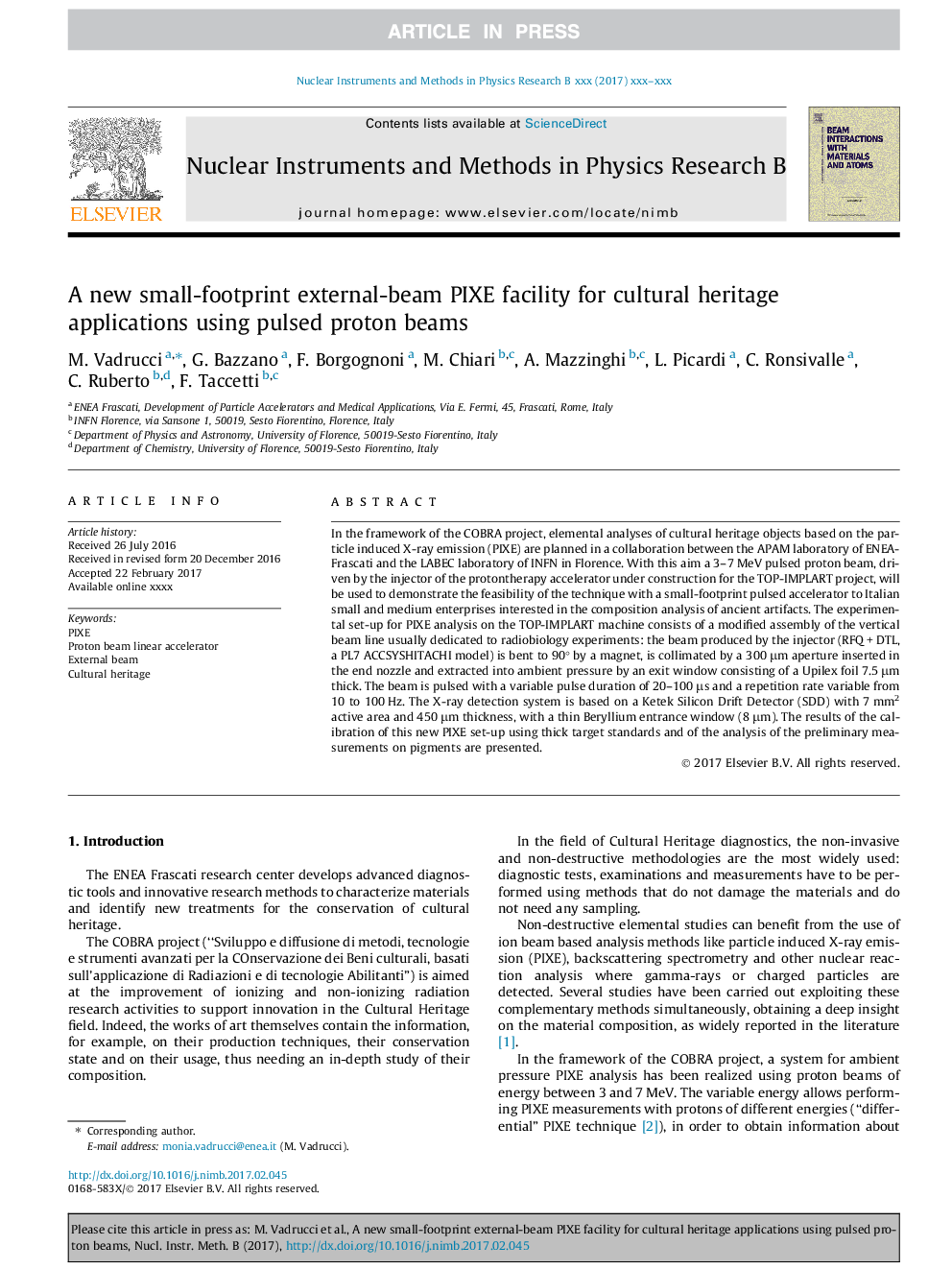| Article ID | Journal | Published Year | Pages | File Type |
|---|---|---|---|---|
| 5467484 | Nuclear Instruments and Methods in Physics Research Section B: Beam Interactions with Materials and Atoms | 2017 | 4 Pages |
Abstract
In the framework of the COBRA project, elemental analyses of cultural heritage objects based on the particle induced X-ray emission (PIXE) are planned in a collaboration between the APAM laboratory of ENEA-Frascati and the LABEC laboratory of INFN in Florence. With this aim a 3-7 MeV pulsed proton beam, driven by the injector of the protontherapy accelerator under construction for the TOP-IMPLART project, will be used to demonstrate the feasibility of the technique with a small-footprint pulsed accelerator to Italian small and medium enterprises interested in the composition analysis of ancient artifacts. The experimental set-up for PIXE analysis on the TOP-IMPLART machine consists of a modified assembly of the vertical beam line usually dedicated to radiobiology experiments: the beam produced by the injector (RFQ + DTL, a PL7 ACCSYSHITACHI model) is bent to 90° by a magnet, is collimated by a 300 μm aperture inserted in the end nozzle and extracted into ambient pressure by an exit window consisting of a Upilex foil 7.5 μm thick. The beam is pulsed with a variable pulse duration of 20-100 μs and a repetition rate variable from 10 to 100 Hz. The X-ray detection system is based on a Ketek Silicon Drift Detector (SDD) with 7 mm2 active area and 450 μm thickness, with a thin Beryllium entrance window (8 μm). The results of the calibration of this new PIXE set-up using thick target standards and of the analysis of the preliminary measurements on pigments are presented.
Keywords
Related Topics
Physical Sciences and Engineering
Materials Science
Surfaces, Coatings and Films
Authors
M. Vadrucci, G. Bazzano, F. Borgognoni, M. Chiari, A. Mazzinghi, L. Picardi, C. Ronsivalle, C. Ruberto, F. Taccetti,
